Do you have a question about the Whirlpool WDTA50SAKW and is the answer not in the manual?
Provides essential safety precautions to follow when using the appliance.
Details critical electrical grounding requirements for safe operation.
Recommends detergent types and usage for optimal cleaning performance.
Explains the purpose and usage of rinse aid for improved drying.
Information on cycle times and energy-efficient operation.
Details sanitizing cycles and compliance with NSF standards.
Guidelines for loading silverware to ensure effective cleaning.
Instructions for adjusting tines to accommodate various bowl sizes.
Method for folding tines to optimize rack space and loading flexibility.
Usage guide for securely holding stemware and glasses.
Instructions for using the cup shelf for small items.
Procedure for removing upper racks for better access to lower levels.
Best practices for maintaining the cleanliness of the dishwasher interior.
Guidance on inspecting and cleaning the drain air gap.
Precautions to protect the appliance during periods of non-use.
Recommended methods for cleaning the dishwasher's outer surfaces.
Solutions for common issues encountered during operation.
Instructions for locating and emptying the foreign object filter.
Step-by-step guide to access and modify dishwasher settings.
Identifies error codes and blinking light patterns with troubleshooting steps.
Lists essential tools and components required for installation.
Lists additional parts that may be required for installation.
Key checks and recommendations for initial appliance setup.
Information on available optional accessories for the dishwasher.
Specifies criteria for selecting a suitable installation site.
Provides detailed measurements for the appliance and installation openings.
Explains the installation and function of an air gap in the drain system.
Outlines the necessary specifications for connecting to the water supply.
Details proper electrical connection, wiring, and safety standards.
Steps for preparing the cabinet for new utility line installations.
Instructions for installing a moisture barrier under wood countertops.
Steps for safely connecting the dishwasher to the electrical supply.
Steps to ready the dishwasher before placing it into the cabinet.
Procedure for removing the drip tray and its associated wiring.
Instructions for attaching the water supply line to the dishwasher fill valve.
Steps for properly connecting the fill hose to the water inlet valve.
Procedures for connecting the drain hose to the household plumbing.
Instructions for safely connecting the power cord to the electrical outlet.
Detailed instructions for making internal wire connections in the terminal box.
Guide for attaching the door handle on applicable models.
Steps for positioning the appliance within the designated cabinet space.
Specific guidance for installing custom front panels on certain models.
Selection criteria for securing the dishwasher to cabinetry.
Method for securing the dishwasher to the underside of the countertop.
Method for securing the dishwasher to the adjacent cabinet sides.
Procedures to confirm correct installation and alignment before use.
Final steps to anchor the dishwasher firmly in place.
Steps to connect the supply line to the household water shut-off valve.
Options and procedures for connecting the drain hose to plumbing.
Detailed procedures for various drain hose connection configurations (e.g., disposer, air gap).
Final tasks including reconnecting electrical and replacing components.
Steps for connecting power and performing initial checks.
Guide for verifying the dishwasher's functionality after installation.
Procedure for reinstalling access panels and securing fasteners.
Troubleshooting steps for common operational failures.
Provides essential safety precautions to follow when using the appliance.
Details critical electrical grounding requirements for safe operation.
Recommends detergent types and usage for optimal cleaning performance.
Explains the purpose and usage of rinse aid for improved drying.
Information on cycle times and energy-efficient operation.
Details sanitizing cycles and compliance with NSF standards.
Guidelines for loading silverware to ensure effective cleaning.
Instructions for adjusting tines to accommodate various bowl sizes.
Method for folding tines to optimize rack space and loading flexibility.
Usage guide for securely holding stemware and glasses.
Instructions for using the cup shelf for small items.
Procedure for removing upper racks for better access to lower levels.
Best practices for maintaining the cleanliness of the dishwasher interior.
Guidance on inspecting and cleaning the drain air gap.
Precautions to protect the appliance during periods of non-use.
Recommended methods for cleaning the dishwasher's outer surfaces.
Solutions for common issues encountered during operation.
Instructions for locating and emptying the foreign object filter.
Step-by-step guide to access and modify dishwasher settings.
Identifies error codes and blinking light patterns with troubleshooting steps.
Lists essential tools and components required for installation.
Lists additional parts that may be required for installation.
Key checks and recommendations for initial appliance setup.
Information on available optional accessories for the dishwasher.
Specifies criteria for selecting a suitable installation site.
Provides detailed measurements for the appliance and installation openings.
Explains the installation and function of an air gap in the drain system.
Outlines the necessary specifications for connecting to the water supply.
Details proper electrical connection, wiring, and safety standards.
Steps for preparing the cabinet for new utility line installations.
Instructions for installing a moisture barrier under wood countertops.
Steps for safely connecting the dishwasher to the electrical supply.
Steps to ready the dishwasher before placing it into the cabinet.
Procedure for removing the drip tray and its associated wiring.
Instructions for attaching the water supply line to the dishwasher fill valve.
Steps for properly connecting the fill hose to the water inlet valve.
Procedures for connecting the drain hose to the household plumbing.
Instructions for safely connecting the power cord to the electrical outlet.
Detailed instructions for making internal wire connections in the terminal box.
Guide for attaching the door handle on applicable models.
Steps for positioning the appliance within the designated cabinet space.
Specific guidance for installing custom front panels on certain models.
Selection criteria for securing the dishwasher to cabinetry.
Method for securing the dishwasher to the underside of the countertop.
Method for securing the dishwasher to the adjacent cabinet sides.
Procedures to confirm correct installation and alignment before use.
Final steps to anchor the dishwasher firmly in place.
Steps to connect the supply line to the household water shut-off valve.
Options and procedures for connecting the drain hose to plumbing.
Detailed procedures for various drain hose connection configurations (e.g., disposer, air gap).
Final tasks including reconnecting electrical and replacing components.
Steps for connecting power and performing initial checks.
Guide for verifying the dishwasher's functionality after installation.
Procedure for reinstalling access panels and securing fasteners.
Troubleshooting steps for common operational failures.
| Type | Built-In |
|---|---|
| Capacity | 14 Place Settings |
| Wash Cycles | 5 |
| Drying System | Heated Dry |
| Control Type | Electronic |
| Weight | 85 lbs |
| Number of Options | 4 |
| Upper Rack Features | Adjustable |
| Water Filtration System | Yes |
| Energy Star Certified | Yes |
| Soil Sensor | Yes |
| Delay Start | Yes |
| Third Rack | No |
| Stainless Steel Tub | Yes |
| Water Usage | 3.5 Gallons |

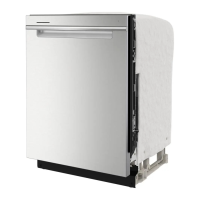
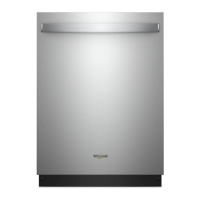
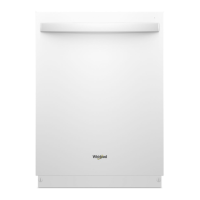
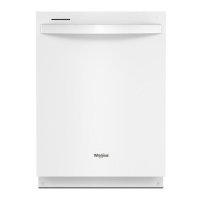
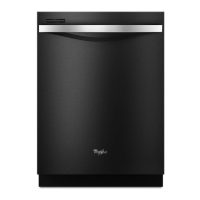
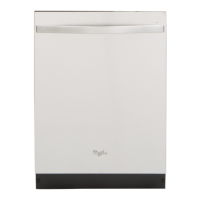
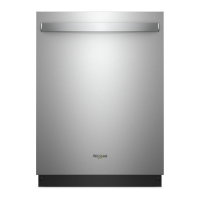
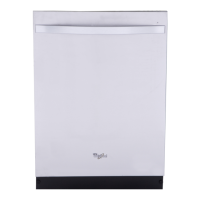
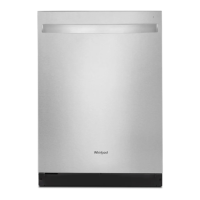
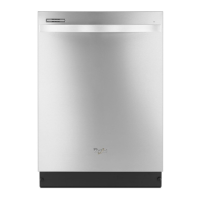

